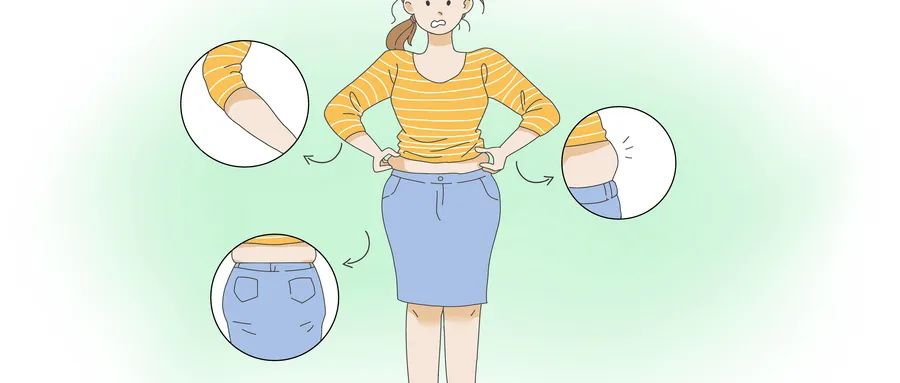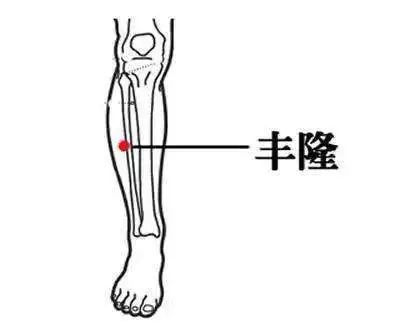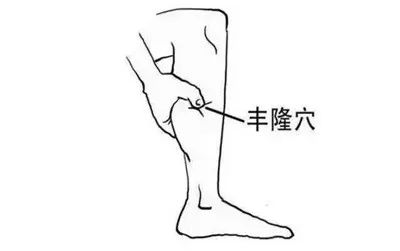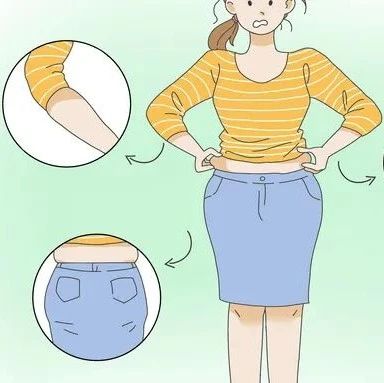
In Traditional Chinese Medicine (TCM), it is often said that “overweight individuals tend to have dampness,” meaning that obese individuals generally belong to the phlegm-damp constitution.
This is due to the frequent consumption of rich and greasy foods, which are difficult to digest and place a burden on the spleen and stomach, leading to improper transformation and transportation of fluids in the body. This results in the accumulation of dampness, which can condense into “phlegm,” and undigested substances can easily lead to obesity.

Individuals who have long been in a humid environment, enjoy rich and greasy foods, or are elderly and have chronic illnesses often experience spleen and stomach deficiency, making them prone to phlegm-damp accumulation, which can manifest as symptoms like heaviness in the body and abdominal fullness.
People with a phlegm-damp constitution can improve their condition not only by consuming foods such as Yi Yi Ren (Job’s Tears) and Chi Xiao Dou (Adzuki Beans), which have the effects of strengthening the spleen, eliminating dampness, and resolving phlegm, but also by exercising, using herbal remedies, and stimulating this acupoint—Feng Long (Fenglong)—to achieve the effect of eliminating dampness and resolving phlegm.
Key Acupoint for Eliminating Dampness and Resolving Phlegm—Feng Long
The Feng Long acupoint is a well-known acupoint in TCM for eliminating dampness and resolving phlegm. As stated in the Yu Long Ge: “For excessive phlegm, seek Feng Long.”
The name Feng Long means the sound of thunder. Massaging this acupoint can expel the turbid dampness from the spleen and stomach as if thunder were raining down. By expelling phlegm-damp from the body and promoting the flow of qi and blood, blood lipids can naturally decrease, effectively preventing and controlling hyperlipidemia and fatty liver disease.
Location of the Acupoint

The Feng Long acupoint is located on the outer side of the lower leg, 8 cun above the tip of the outer ankle, 1 cun lateral to the Tiao Kou (Tiaokou) acupoint, and 2 fingerbreadths (middle finger) lateral to the anterior crest of the tibia.
Why is Feng Long Acupoint Considered the Key Acupoint for Resolving Phlegm?
In TCM, the production of phlegm is often related to the lungs and spleen. External pathogens attacking the lungs can easily produce tangible phlegm; irregular diet and spleen dysfunction can lead to internal water dampness, resulting in the accumulation of intangible phlegm.
The Feng Long acupoint is a connecting point of the Foot Yangming Stomach Meridian. This meridian is abundant in qi and blood, and at this acupoint, the flesh is plump and bulging, hence the name.
This meridian is characterized by abundant qi and blood, and the Feng Long acupoint is the most abundant acupoint for qi and blood. This acupoint connects the superficial and deep meridians, allowing for the flow of qi and blood in both the exterior and interior, thus it can not only promote the transformation of food and fluids but also treat both superficial and deep conditions related to the spleen. It can strengthen the stomach and regulate the spleen, restoring the spleen’s function of transforming and transporting dampness, thereby resolving phlegm-damp.
In addition, the Feng Long acupoint also has the effects of regulating qi, calming the chest, harmonizing the stomach, descending rebellious qi, and regulating qi and blood. Besides improving constitution and managing sub-health, it is commonly used clinically to treat various diseases such as bronchitis, bronchial asthma, neurasthenia, schizophrenia, epilepsy, hypertension, vascular headache, dizziness, and gastrocnemius muscle cramps.
Self-Care with Feng Long Acupoint at Home

Self-MassageMassage the acupoint twice daily, once in the morning and once in the evening, for 5 minutes each time, to the point of mild soreness that is bearable. Since this acupoint has relatively thick muscle, use the three-finger kneading method.Press the acupoint with the pads of the index, middle, and ring fingers, applying pressure with the middle finger. First press and then knead, pressing vertically down to a certain depth before using the kneading method. The pressure should start light and gradually increase, steady and continuous, allowing the stimulation to reach the deep tissues of the body. Gradually decrease the pressure at the end and repeat the action.
The Feng Long acupoint can also be combined with the Feng Chi (Fengchi) acupoint to treat dizziness; with the Dan Zhong (Danzhong) and Fei (Fei) acupoints to treat excessive phlegm and cough; or with the Fei, Tian Fu (Tianfu), and Chi Ze (Chize) acupoints for phlegm elimination and cough suppression, treating cough with phlegm and asthma. It can also be combined with the Yin Ling Quan (Yinlingquan), Shang Qiu (Shangqiu), and Zu San Li (Zusanli) acupoints to treat phlegm-damp conditions; or with the Feng Chi and Shen Men (Shenmen) acupoints to treat insomnia.
MoxibustionUse gentle moxibustion, keeping the burning end of the moxa stick about one inch away from the skin, ensuring the patient feels warmth without burning pain.
During moxibustion, sit comfortably, holding the lit moxa stick towards the acupoint, about 1.5-3 cm from the skin, until the patient feels warmth and comfort. Moxibustion should be done once daily for 3-15 minutes, until the skin shows a slight redness. This method is effective for cough with phlegm, phlegm-damp headaches, dizziness, mania, and lower limb paralysis.
Application TherapyFirst, massage or tap the right Feng Long acupoint for 5 minutes, then crush licorice and apply it to the acupoint, securing it with medical gauze and adhesive tape. Each application should last for 12 hours, followed by a 12-hour break before reapplying.
This method enhances the effect of the Feng Long acupoint by utilizing the spleen-benefiting, qi-invigorating, phlegm-resolving, and cough-suppressing properties of licorice. Note: Use with caution for those allergic to licorice.
Rubbing the Feng Long Acupoint to Relieve Abdominal Distension
If someone frequently feels abdominal distension, belches, and has poor appetite, especially feeling discomfort in the stomach after meals, they can rub the Feng Long acupoint to relieve the distension.The method is:Use the thumb to press the Feng Long acupoint for 3 minutes, then rub the acupoint in a clockwise direction for 10 minutes, and finally use the thumb to rub the Feng Long acupoint in one direction for another 10 minutes. For the health of those with a phlegm-damp constitution, in addition to massaging the above acupoints, here are some additional tips:
For the health of those with a phlegm-damp constitution, in addition to massaging the above acupoints, here are some additional tips:
1. In terms of diet, first avoid rich and greasy foods, alcohol, and overeating or eating too quickly. It is advisable to consume mild-flavored, warm, and neutral foods, and to eat appropriate amounts of vegetables and small amounts of fruit.
2. It is recommended to eat foods that warm and tonify the spleen and stomach, resolve phlegm and dampness, strengthen the spleen, and promote dampness elimination. Many foods have a damp-promoting effect, which is unsuitable for individuals with a phlegm-damp constitution. Additionally, most fruits are cold and raw, so excessive consumption of fruits can not only fail to aid weight loss but also exacerbate internal phlegm-dampness, leading to further weight gain.
3. Try to avoid heavily flavored foods. Fried foods, foods high in fat, many sweets, and foods with strong sour flavors are all conducive to the generation of phlegm-dampness. ■[Source: This content is compiled from the Foshan Traditional Chinese Medicine Hospital and Yangsheng Zhengdao]Recommended Reading



